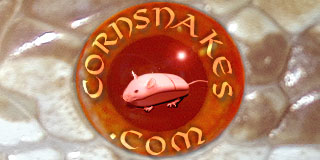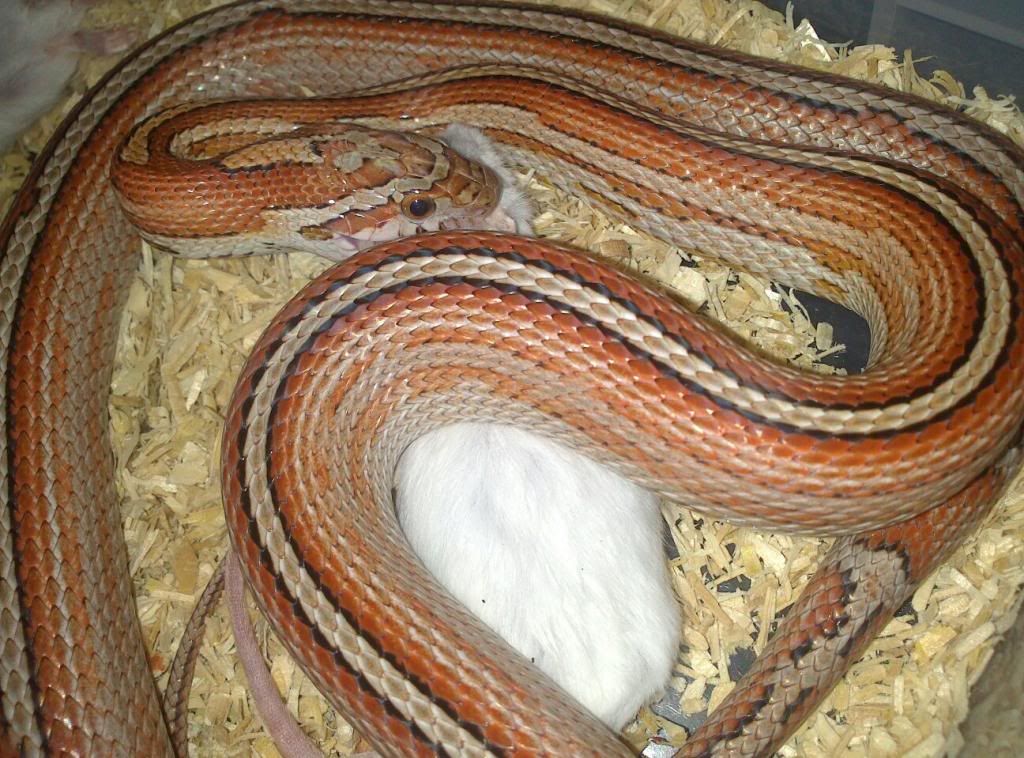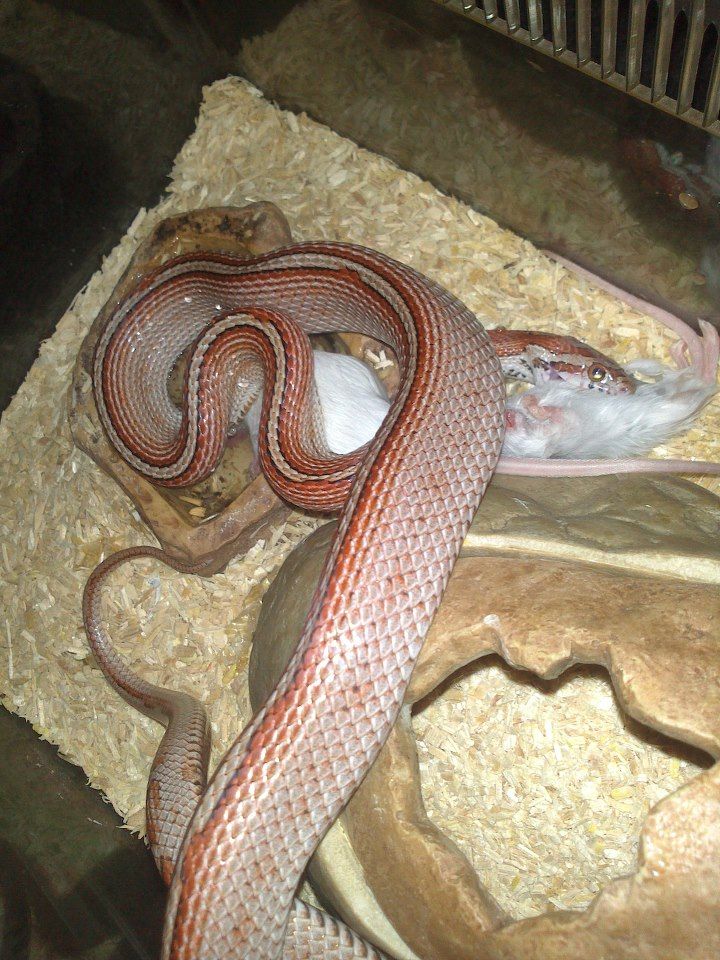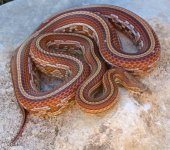A couple of clarifications. . . .
Wow- Glad that snake is doing well for you Rich! It was always one of my favorites but I let Don Shores get it in trade years back.
It was from the first clutch of Tesseras that were produced by KJ & I. It was from the original 1.1 (of the original 2.1 group). The clutch consisted of normals, tesseras and this striped animal (there was also a couple- 2 if I remember correct- of weird looking motley "things" too). I'm guessing the original Tesseras carried the motley/stripe gene(s). We didn't know what to think about this animal---no one had ever seen a tessera with no side patterning (like the regular tesseras). Don Soderberg had produced Tesseras the year prior but since he only had the other original male and was outcrossing him to his animals, any recessive gene(s) that may/may not have been in the original animals didn't show up since Don bred his male to an Okeetee female(s) the first year (to the best of my knowledge--I could be wrong). I wholesaled the strange looking motley animals to a pet store (darn I wish I would have kept them--and I didn't take pics of them--- they just looked different than other motley animals I've seen).
The adults are not gone to different breeders... Don Soderberg has 1 of the original males, I sold the orther original male to a European breeder and my friend Dave Partington has the original female.
Sorry for the quick/jumbled response. I have 15 minutes to eat beakfest and leave the house before I'm late this morning. Figured I'd share what I remembered off the top of my head. Below are a few pics of that animal as a neonate!!!
Enjoy,
Graham
Graham, from all of us, thanks for ORIGINAL data on the Tesseras.
First, I believe that when the originator of this line said he bred a Striped corn to an Okeetee corn, he actually had a Striped Tessera (but obviously was unaware of the "Tessera" gene). It is much more likely that the four Tessera mutants he received from that original pairing were from the Striped mutant parent that was also Tessera vs. from the Tessera mutants to be spontaneously manifested from a Striped parent that was not Tessera. When I showed the pictures of my first brood of the F2s from the male you gave me to KJ, he suspected that the supremely-striped Tessera sibs were just Striped mutants that received the odd and collateral genetic jolt from the Tessera mutation. Since they not only had perfect stripes but also retained black margins on their striped pattern, I was convinced they were not single-recessive Striped mutants. As it turned out, they were indeed Striped AND Tessera, but it begs the question, "where were the non-Tessera Striped mutants in the first Tessera brood?". Since the first Tesseras hatched, each time I get pseudo-perfectly striped mutants, I guardedly call them Striped Tesseras, and dub only the ones with Black on them "Striped Tesseras". So far, that has worked out, but since some of the striped phenotypes in those broods would have to be Striped but NOT Tessera, we shouldn't call all Striped phenotype Tessera siblings
Striped Tesseras.
Since we all seek markers for Tessera Homozygotes (aka: Super-Forms) it is noteworthy that the seemingly unique one you produced that is now in the possession of Vin Russo and Rich Hume has some lateral broken-striped markings that are not evident in most Striped Tesseras. Does this indicate that perhaps Homozygote Tesseras have those lateral markings and their Visual-Het Tessera counterparts do not? Shrugs???
Someone else in this thread (sorry not to recall who you are) said that Tessera inheritance has been demonstrated to be dominant to wild-type pattern. That is a text book explanation, but since there are so many other corn snake mutations out there, I prefer to say that the Tessera pattern is dominant to wild-type pattern AND non-Tessera mutants. I'm probably not articulating that properly, but since corns can presumably be both Motley AND Tessera, did the Motley pattern dominate or co-express with Tessera? That therefore begs the question, "is Stripe dominant to Tessera - since Striped Tesseras generally lack the classic lateral tessellated pattern?".
Everyone, please, share your thoughts, observations, or facts on these points.
Don
















